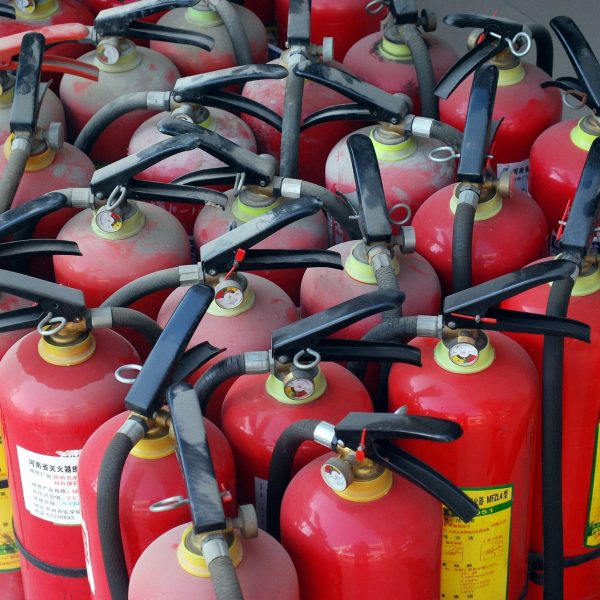
Fire extinguishers are designed to fight small fires, providing a layer of protection for your employees and business property.
The most important thing you can do to assist in protecting your consumers, workers, and assets is to reduce the danger of a possible fire at your company.
So what steps should you take to reduce the likelihood of such an emergency from happening at your business?
In this post, we consider a few key fire extinguisher tips that every business owner should keep in mind when it comes to using fire extinguishers effectively.
1. Keep Fire Extinguisher Accessible and Clearly Labeled
When it comes to fire safety, having easy access to fire extinguishers is essential. Not only are fire extinguishers an important tool for putting out small fires, but they can also help to minimize the risk of fire spreading if a fire does occur.
To ensure fire extinguishers are always within reach, it is important to develop a fire prevention plan that includes adequate placement and labelling.
Consider placing fire extinguishers near potential fire hazards like electrical outlets or stove burners, as well as clearly marking their location with visible labels or signage. By taking this simple step, you can help to keep your workplace safe from fire.
2. Ensure Your Equipment Is Up to Date
When it comes to fire prevention for work, one of the most important things to keep in mind is the condition of your fire extinguisher. An out-of-date fire extinguisher can be ineffective during an emergency, putting you and your coworkers at risk.
Therefore, it is important to regularly check on the status of your fire extinguisher, making sure that all internal components are still working properly and that there are no visible signs of wear or damage. Issues you should take note of:
● A destroyed nozzle
● A leaking fire extinguisher
● Visible wear or damage to the fire extinguisher itself
● A missing lock pin
3. Fire Extinguishers Should Be Routinely Replaced
Fire prevention for work is something that every business owner should be actively thinking about. Unfortunately, fire extinguishers don’t last forever. Your fire prevention plan should assist you with the protocol surrounding fire extinguisher replacement times.
It’s important to regularly check the expiration date on your fire extinguishers and replace them as needed. Fire extinguishers regularly have a life expectancy of 10 years, however, this can vary depending upon the sort of fire extinguisher and how frequently it’s utilized.
If you’re not sure when your fire extinguishers need to be replaced, consult with a fire safety professional.
4. Test Your Fire Extinguisher
To ensure optimal fire prevention for work, you should regularly test your fire extinguishers to make sure they are all working properly. One way to test your fire extinguishers is to follow the PULSE acronym:
P for pulling the pin,
U for understanding how the lever works,
L for looking at how much pressure you’re applying,
S for squeezing the handle while keeping the nozzle pointed away from yourself, and
E for immediately discharging all of the foam or powder from the canister once it has been activated.
5. Fire Extinguishers Are Specifically Designed to Fight Different Kinds of Fires
Grease fires have different qualities than electrical fires, and therefore, require a different fire extinguisher. Fire extinguishers will be labelled with the sort of fire they can put out. You need to get fire training from professionals. The three most common types of fire extinguishers include:
● Multipurpose ABC dry chemical extinguishers
This type of fire extinguisher is effective in Class A (ordinary), B (flammable liquid), and C (electrical) fires.
● Water mist fire extinguishers
Water mist fire extinguishers work by cooling the fire and removing the oxygen, which smothers the fire.
● CO2 fire extinguishers
CO2 fire extinguishers are more useful for Class B and C fires.
● Sodium chloride fire extinguishers
Sodium chloride fire extinguishers are only effective in Class C fires and can cause damage to electrical equipment.
6. After a Fire, the Extinguishers Must Be Recharged
Once a fire extinguisher has been used, it must be recharged by a certified professional. This is because the fire extinguisher will have lost some of its pressure after use and must be refilled with the appropriate fire suppression agent.
Failure to have your fire extinguisher recharged can result in a fire extinguisher that is not effective when you need it most, putting you and your coworkers at risk. By following these simple steps, you can help to keep your workplace safe from fire and ensure that you are always prepared for any emergency.
8. You Must Properly Dispose of Fire Extinguishers
As any business owner can tell you, fire safety is critical in every workplace. Having fire extinguishers on your premise is a critically key fire safety procedure.
However, fire extinguishers also need to be thoroughly maintained and disposed of properly. For nearly-empty fire extinguishers, start by squeezing the trigger to release any remaining pressure. Next, remove the discharge hose and discharge valve from the canister.
When it’s time to replace fire extinguishers, contact a professional. You can recycle old fire extinguishers or sell them online on sites like eBay or Craigslist if you remove the internal content.
Bottom Line
Fire extinguishers are an essential part of any fire prevention plan. Remember to regularly check the status of your fire extinguisher and have it replaced if there is any damage. Be sure to communicate with your staff about fire safety procedures and provide fire training regularly.
For businesses in Waterloo, Ontario keen to discuss fire suppression systems with a specialist don’t hesitate to reach out to All Protect Systems.
We offer a comprehensive line of emergency backup generators, fire alarm systems, fire warning systems, fire extinguishers, emergency lighting, exit lighting, fire safety plans, sprinkler systems, and gas detection services.
Request a free quote today.